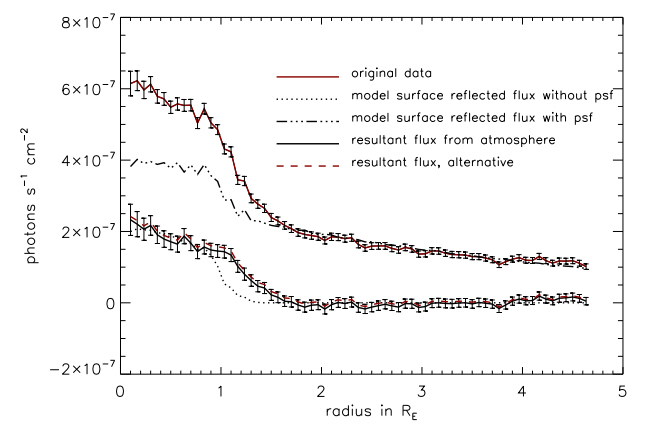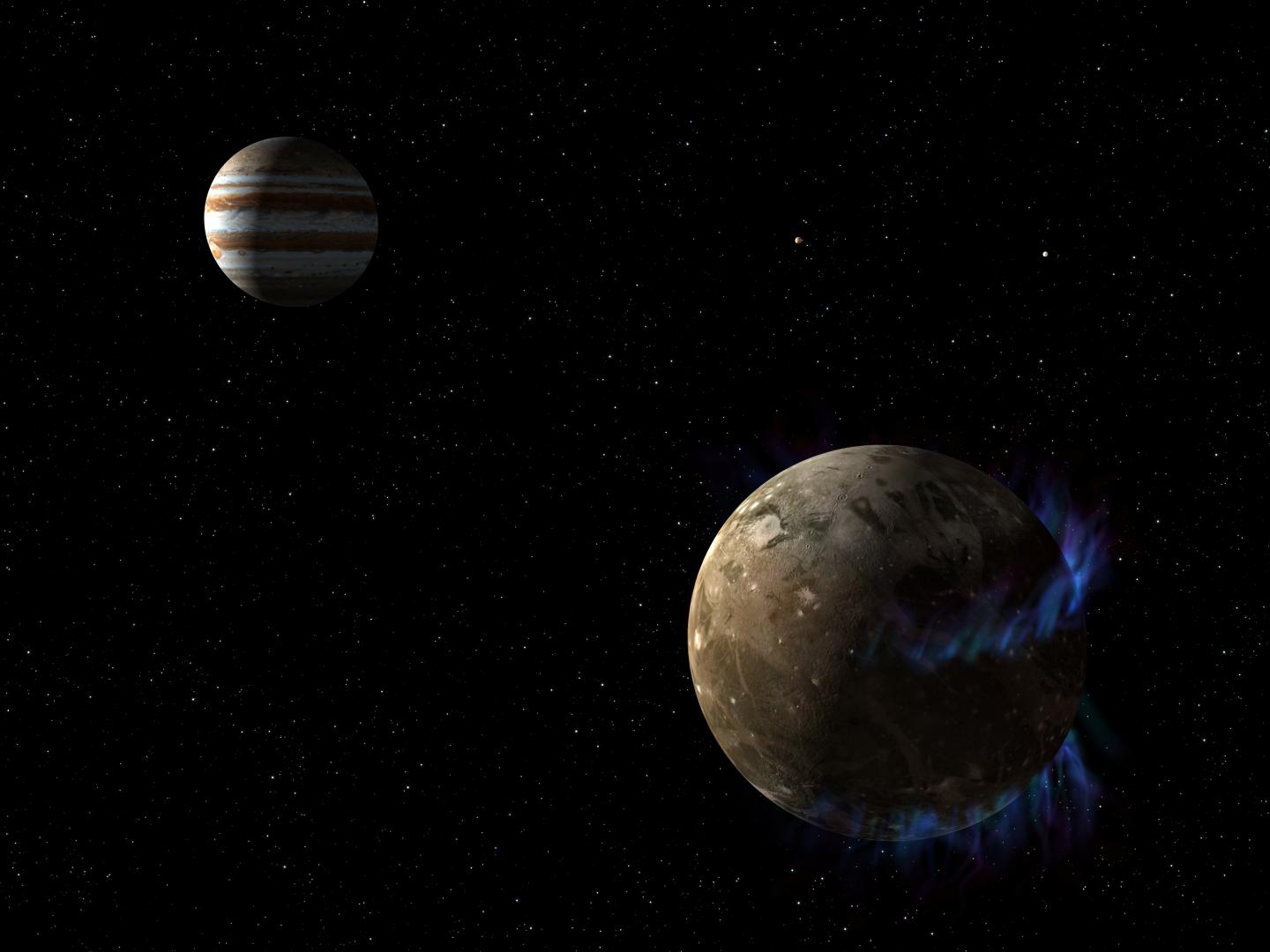But why?
Ganymede is the largest moon in our solar system and the only moon with its own magnetic field. The magnetic field causes aurorae, which are ribbons of glowing, hot electrified gas, in regions circling the north and south poles of the moon. Because Ganymede is close to Jupiter, it is also embedded in Jupiter's magnetic field. When Jupiter's magnetic field changes, the aurorae on Ganymede also change, "rocking" back and forth so by watching the rocking motion of the two aurorae, scientists were able to determine that a large amount of saltwater exists beneath Ganymede's crust affecting its magnetic field.
A team of scientists led by Joachim Saur of the University of Cologne in Germany came up with the idea of using Hubble to learn more about the inside of the moon. "I was always brainstorming how we could use a telescope in other ways," said Saur. "Is there a way you could use a telescope to look inside a planetary body? Then I thought, the aurorae! Because aurorae are controlled by the magnetic field, if you observe the aurorae in an appropriate way, you learn something about the magnetic field. If you know the magnetic field, then you know something about the moon's interior."
Scientists first suspected an ocean in Ganymede in the 1970s, based on models of the large moon. NASA's Galileo mission measured Ganymede's magnetic field in 2002, providing the first evidence supporting those suspicions. The Galileo spacecraft took brief "snapshot" measurements of the magnetic field in 20-minute intervals, but its observations were too brief to distinctly catch the cyclical rocking of the ocean's secondary magnetic field.
Using inference, if a saltwater ocean were present, Jupiter's magnetic field would create a secondary magnetic field in the ocean that would counter Jupiter's field. This "magnetic friction" would suppress the rocking of the aurorae. This ocean fights Jupiter's magnetic field so strongly that it reduces the rocking of the aurorae to 2 degrees, instead of the 6 degrees, if the ocean was not present. Scientists estimate the ocean is 60 miles (100 kilometers) thick - 10 times deeper than Earth's oceans - and is buried under a 95-mile (150-kilometer) crust of mostly ice.
Ganymede is not the only possibility, several lines of evidence point to a subsurface water ocean under the icy crust of Europa as well, because it is much less heavily cratered than Ganymede and Callisto. Like Ganymede, it would have to be buried under ice and is inferred by both induced magnetic fields and geologic features that may have been due to flexing of the ice under tidal forces.
Identifying liquid water is crucial in the search for habitable worlds beyond Earth and for the search of life as we know it, notes NASA.
 |  |
Citation: Joachim Saur, Stefan Duling, Lorenz Roth, Xianzhe Jia, Darrell F. Strobel, Paul D. Feldman, Ulrich R. Christensen, Kurt D. Retherford, Melissa A. McGrath, Fabrizio Musacchio, Alexandre Wennmacher, Fritz M. Neubauer, Sven Simon, Oliver Hartkorn, 'The search for a subsurface ocean in Ganymede with Hubble Space Telescope observations of its auroral ovals', Journal of Geophysical Research DOI: 10.1002/2014JA020778





Comments